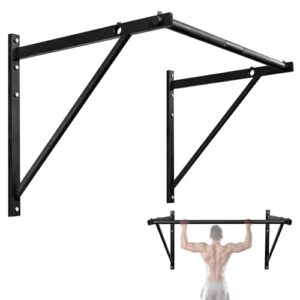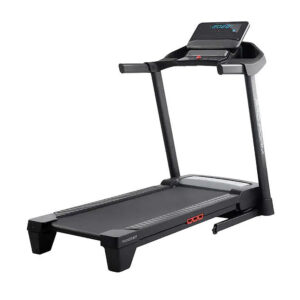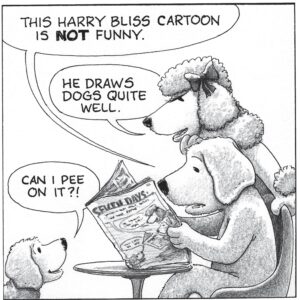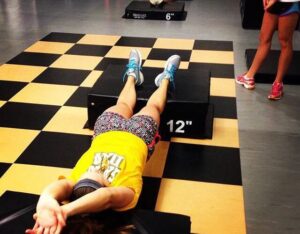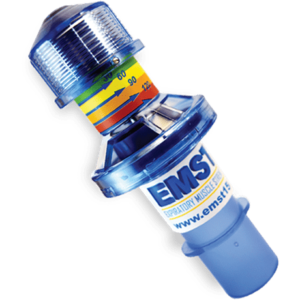Strength training for baseball enhances player performance and reduces injury risks. It focuses on building muscle and power specific to the sport’s demands.
Engaging in a tailored strength training regimen is critical for baseball players aiming to elevate their game. This training typically integrates exercises that improve upper and lower body strength, core stability, and explosive power – all vital for hitting, pitching, and fielding.
A strategic blend of resistance workouts and functional movements can help athletes develop the necessary agility and speed on the field. A well-designed strength program not only boosts athletic ability but also fortifies the body against the rigorous demands of a long baseball season. Being consistent with strength training can lead to significant improvements in a player’s throwing velocity, batting power, and overall performance, making it an indispensable part of a baseball athlete’s routine.
Unleashing Power: The Role Of Strength Training In Baseball
Baseball players seek that extra edge to excel on the field. Strength training becomes a game-changer, much like a powerful swing transforms a good hitter into a home-run legend. Players harness strength to improve performance and reduce injury risks. Let’s delve into how strengthening muscles lays the groundwork for a superior in-game performance and acts as a shield against injuries.
Building The Foundations: How Muscular Strength Translates To Performance
Stronger muscles mean more force and speed during play. This strength reflects in:
- Faster Sprints: Muscle power helps players dash to bases or chase down balls.
- Harder Hits: Strong wrists and arms turn bats into launch pads for balls.
- Longer Throws: Pitchers and fielders need muscle strength for fast, far throws.
Strength training also improves the subtler parts of the game:
- Balance during swings
- Endurance throughout games
- Agility for swift moves
Overall, stronger muscles enable players to outperform in all aspects of the game.
More Than Just Muscle: Injury Prevention Through Strength
Besides performance, strength training plays a significant role in preventing injuries. Here’s how:
| Body Part | Strength Benefit |
|---|---|
| Shoulders and Elbows | Resists wear from pitching and throwing |
| Knees and Ankles | Supports joints during sprints and jumps |
| Back and Core | Reduces strain from swinging and twisting |
Strong muscles mean less strain on bones and joints during high-impact moves. Consistent strength training prepares the body to handle the stresses of baseball.
Customized Workouts: Tailoring Strength Training To Baseball Demands
Baseball players need more than just general strength; they require specialized workouts. These workouts enhance skills specific to their roles on the field. A pitcher’s program might differ from that of an outfielder. This customization ensures that players develop the right muscles and movement patterns needed for optimal performance. Let’s explore some of these tailored exercises.
Position-Specific Exercises: Training for Your Role on the DiamondPosition-specific Exercises: Training For Your Role On The Diamond
Understanding your position is critical for effective training. Each position has unique requirements:
- Infielders benefit from quick lateral movements and strong arms.
- Outfielders need explosive speed and leg strength for long runs.
- Pitchers focus on shoulder stability and rotational power.
- Catchers require leg endurance and core strength.
| Position | Key Exercises |
|---|---|
| Infielders | Lateral squats, arm throws |
| Outfielders | Sprints, leg press |
| Pitchers | Shoulder press, medicine ball twists |
| Catchers | Wall sits, planks |
Balance And Flexibility: Core Elements Beyond The Weights
Strength isn’t just about lifting weights. Good balance and flexibility are crucial. They help with injury prevention and improve overall game performance. A mix of stretches and balance drills should be part of a baseball player’s regimen:
- Dynamic stretching warms up muscles and prepares them for action.
- Balance exercises like single-leg stands increase stability.
- Yoga or Pilates can enhance flexibility and core strength.
Include these practices regularly for a well-rounded training program.
Key Exercises For Baseball Athletes
Strengthening the body is crucial for baseball athletes. Specific exercises target muscles used during the game.
Key exercises improve performance and reduce injury risks. A focus on legs and upper body is essential.
Leg Day: Driving Force Behind A Powerful Swing
Leg strength is vital for hitting with power. Here are exercises to enhance leg power.
- Squats: Build overall leg muscle, focusing on quads and glutes.
- Barbell back squats
- Split squats
- Deadlifts: Increase lower back and hamstring strength.
- Conventional deadlifts
- Sumo deadlifts
- Lunges: Improve balance and unilateral leg strength.
- Walking lunges
- Reverse lunges
- Leg Press: Target the same muscles as squats with less strain on the back.
Upper Body Strength: Enhancing Throwing And Batting Power
Upper body workouts boost power in throws and swings.
- Bench Press: Increase chest, shoulder, and triceps strength.
- Flat bench press
- Incline bench press
- Rows: Build a strong back for better swing stability.
- Bent-over rows
- Dumbbell single-arm rows
- Shoulder Press: Strengthen shoulders for powerful throws.
- Standing military press
- Seated dumbbell shoulder press
- Rotational Exercises: Essential for swing motion.
- Cable woodchoppers
- Russian twists
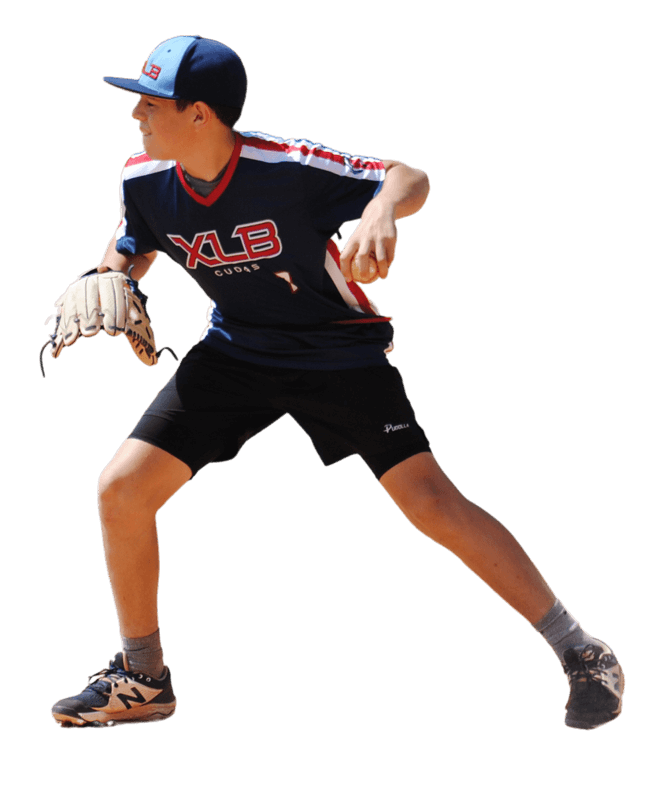
Credit: xlbtraining.com
Periodization: Timing Your Training For Seasonal Success
Periodization: Timing Your Training for Seasonal Success means planning your workouts smartly. It ensures you are strong and ready for all baseball games. This plan helps you to make gains, maintain strength, and peak at the right time.
Off-season Gains: Preparing The Body For The Rigors Ahead
The off-season is a golden chance to build muscle and strength. Use this time to focus on heavy lifting and increasing your power.
- Start with a foundation of strength exercises.
- Include full-body workouts that mimic game movements.
- Prioritize rest and recovery to rebuild muscles.
- Gradually increase the weight to build more muscle.
Follow a structured plan during the off-season. This helps you get stronger safely. Reach out to a coach or a mentor to make the best plan.
| Weeks | Focus | Progression |
|---|---|---|
| 1-4 | Build foundational strength | Light weights, high reps |
| 5-8 | Increased muscle mass | Moderate weights, medium reps |
| 9-12 | Max strength and power | Heavy weights, low reps |
In-season Maintenance: Keeping Strength Levels Optimal
When the season starts, shift your focus to maintaining your strength. This helps prevent injuries and keeps you game-ready.
- Adjust workouts to be shorter and less intense.
- Focus on core exercises that support your swings and throws.
- Keep lifting weights, but reduce the volume.
- Integrate flexibility and mobility drills to aid recovery.
Remember, in-season workouts are about quality over quantity. Your goal is to maintain your off-season gains.
Use this periodization plan to create a foolproof strategy. It should lead to peak performance during the baseball season. Make sure to track your progress and adjust as necessary.
Nutrition And Recovery: Critical Allies In Strength Training
For baseball players, strength training is crucial. Yet without proper nutrition and recovery, gains may flatline. Here’s how diet and downtime fuel peak performance.
Fueling Muscle Growth: Optimal Diet For Strength Gains
Protein is the building block of muscle. Aim for a mix of lean meats, dairy, and plant-based sources. Here’s a simple guide:
- Chicken, turkey, and fish: High-quality proteins.
- Eggs and dairy: Rich in branch-chained amino acids.
- Beans and nuts: Great for vegetarian athletes.
Don’t skip complex carbohydrates. They provide the energy needed for intense workouts.
| Carb Source | Benefits |
|---|---|
| Whole grains | Stable energy release. |
| Sweet potatoes | Packed with vitamins. |
| Fruits | Natural sugars and fiber. |
Hydration keeps the system functioning well. Aim for at least 8 cups of water daily. More if sweating heavily.
Rest And Repair: Understanding The Importance Of Recovery Time
Sleep is a power tool for recovery. Aim for 7-9 hours per night. Here’s why:
- It boosts muscle repair.
- It restores energy levels.
- It improves concentration for game day.
Rest days are also key. Schedule at least one day off weekly to allow muscles to rebuild. Consider active recovery like:
- Light jogging
- Swimming
- Yoga
Lastly, stretching can’t be overlooked. It enhances flexibility and reduces injury risk. Post-training, target major muscle groups for 10-15 minutes.

Credit: 5toolsportsscience.org
Monitoring Progress: Tools And Techniques For Measuring Gains
Every baseball player’s dream is to swing stronger, throw farther, and sprint faster. But dreams need tracking to become achievements. Progress monitoring ensures you’re not just swinging in the dark. Let’s explore the most effective tools and techniques for measuring those hard-earned gains in strength training for baseball.
Assessment Tools: Tracking Strength Over Time
No more guessing games. Real results come from real data. Keep tabs on your strength journey through proven assessment tools.
- 1RM Tests: Record the max weight for a single rep.
- Isometric Assessments: Measure peak force in static positions.
- Progressive Overload: Track increases in weight or reps over time.
| Exercise | Week 1 Max | Week 4 Max | Week 8 Max |
|---|---|---|---|
| Bench Press | 200 lbs | 220 lbs | 240 lbs |
| Squat | 250 lbs | 275 lbs | 300 lbs |
Visually track progress and push limits with each new personal best. Whether it’s your bench press max or squat records, witness the growth unfold.
Integrating Technology: Advanced Methods For Performance Analysis
Enter the digital age: Harness the power of technology to break down performances and rebuild them stronger.
- Wearable Devices: Gain insights on sprints, heart rate, and more.
- Video Analysis: Break down mechanics frame by frame.
- Mobile Apps: Log workouts and get feedback instantly.
From sensors to apps, use every tool to dial in on what works. Make informed decisions to tailor training precisely to your needs.

Credit: kratosports.com
Frequently Asked Questions Of Strength Training For Baseball
How Can I Make My Baseball Stronger?
Improve your baseball swing by incorporating strength training, consistent practice, and proper technique. Focus on core exercises, work with a hitting coach, and analyze your swing mechanics. Use resistance training and plyometrics to enhance power and bat speed.
How Do You Lift Weights For Baseball?
To lift weights for baseball, start with a dynamic warm-up. Focus on compound exercises like squats and presses. Include rotational movements to mimic batting and throwing. Prioritize core strength and stability. Always maintain proper form, and gradually increase weight to build power without risking injury.
How Do You Build Strength For Batting?
To build strength for batting, engage in regular resistance training, focusing on core, arms, and legs. Incorporate compound exercises like squats, deadlifts, and bench presses. Practice batting drills to improve technique and power. Ensure proper nutrition for muscle recovery.
What Exercises Increase Bat Speed And Power?
To boost bat speed and power, focus on rotational exercises, wrist strengthening drills, core workouts, and plyometric training. Resistance band swings and medicine ball throws can also be effective. Regular practice with weighted bats improves muscle memory and strength.
What Are Effective Strength Training Exercises For Baseball?
Effective exercises include squats, deadlifts, bench press, rows, shoulder press, and rotational core work specifically tailored for baseball performance.
How Often Should Baseball Players Strength Train?
Baseball players should aim for 2-4 strength training sessions per week, depending on their season schedule and individual recovery needs.
Conclusion
Wrapping up, strength training is a game-changer for any baseball player aiming to enhance performance. Embrace the routine; witness your power, speed, and agility soar. Remember, consistency is key. Now step up to the plate, ready to hit a home run with your upgraded skill set!



